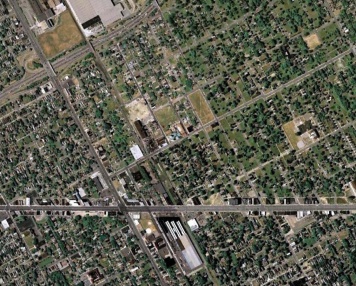Smart cities design timeframe
Contents |
[edit] Introduction
Smart cities optimise the use of technology in the design and operation of infrastructure and buildings in a way which meets the current and future needs of their citizens. Truly smart cities should be about more than just harnessing technology; they require consideration of governance and growth, urban development and infrastructure, the environment and natural resources, society and community. (Ref Buro Happold: Defining and benchmarking SMART cities)
[edit] Complexities of establishing a design timeframe
As urbanisation increases and technologies that offer the opportunity to improve city efficiency and quality of life come on stream at an accelerating rate, so it becomes necessary to ensure that cities are both future-proofed and flexible. The impact of climate change brings in an additional layer of complexity with the need for both resilience and adaptability. These competing demands make it difficult to establish a single timeframe for the design of smart cities.
In its simplest sense, sustainable development means ensuring that the planet is left in a good a state for future generations. As a result, the timeframe necessary to judge the sustainability of a development is a long one. This can present something of a dichotomy for practitioners charged with planning, designing and constructing (or regenerating) cities where short and medium-term goals are easier to establish and measure; especially in terms of cost and pay-back.
It is sometimes argued that longer-term interests are established by national and regional policies and strategies, but this is not always the case as the short timescales of politics and economics tend to hold more sway than the interests of future voters or shareholders.
A case in point is the UK’s much heralded National Infrastructure Plan, which in its initial form was intended to look forward a number of decades, identifying and prioritising the critical elements of infrastructure the UK would need to shape the future well-being of the country. What has actually been produced can be characterised as no more than a list of likely infrastructure projects to be delivered over the next ten years; something that addresses the current economic challenges the Government faces but does not represent effective long-term planning.
Investment in buildings should probably be viewed over a period of 40 to 50 years. However, many developers are constructing for short-term profit and then handing over buildings to asset managers for the longer term. This does not encourage a long-term view of sustainability from a construction and operational perspective.
Many major infrastructure programmes that are being undertaken today will continue to impact on the UK economy and its carbon footprint for the next 50 to 80 years, but few decisions will be made on this basis.
The rapid rate of change in the market place adds a further level of complexity. Designers need to ensure that every opportunity is taken to identify the most efficient solutions for the delivery of buildings and infrastructure. This means taking advantage of the new opportunities offered by technology. The timeframes of some hi-tech industries are measured in months or even weeks. A product may only have a shelf-life of 80 weeks before it becomes redundant and is superseded by a ‘newer and better’ solution.
Properly considering all of these competing demands requires that designers work across a number of different timescales to find solutions which capture rapid and potentially valuable advances in technology and applies them to a backbone of resilient and adaptable infrastructure capable of many years of operation without costly upgrades.
[edit] Roadmap
In developing solutions for smart cities, there needs to be more than just one timeframe. Technology, climate change, political cycles and many other factors are subject to rapid change, and predicting the future is extremely difficult. A better option is to develop a roadmap that focuses on short, medium and long-term strategies for sustainable, smart development.
[edit] Short term
Short-term considerations should be relatively stable and cover a period of 2-3 years. This provides a relative degree of certainty assuming that the political climate is stable. Key focuses should be on future-proofing infrastructure, the approach to procurement strategies and the ability of the client to ensure that it has the flexibility and understanding to adopt and react to change.
[edit] Medium term
The medium term can look forward 5 to 10 years. Solutions proposed, business plans and drivers may change but the future-proofed infrastructure and procurement strategies adopted in the short-term plan should be able to accommodate them.
[edit] Long term
Beyond the 10 year timescale, projects are best set within the perspective of a vision:
- What is the city aiming to be?
- What are its goals and objectives?
- What is its overall strategy for achieving this?
The client has to be able to subscribe to long-term asset development and optimisation of value; simply focussing on the short-term and medium will not maximise the whole life-cycle ROI (return on investment) potential or the opportunity to ensure the city remains sustainable for its inhabitants. The overall framework and underpinning strategies then need to be revisited on a periodic basis to ensure they remain relevant and fit-for-purpose and are adapting appropriately to external drivers and indicators.
This article was created by --Buro Happold 19/4/2013
A note from the authors:
Smart Cities is an arena of topicality and no little importance. With the demographic shifts taking place globally, the impact of climate change and the volatility of resource demand and production, the need for a focus on the planning, design and delivery of 'sustainable' urban development has never been so great. The appropriate application of emerging technologies offers some hope of achieving greater efficiencies in the way cities operate and citizens live their lives. But too often the focus of the debate is lost. Technology and ‘smartness’ needs to be taken in context – they are another layer to help improve the 'sustainability' of projects, not the answer in themselves. Buro Happold takes the position that first and foremost, urban development needs skilled and experienced teams to promote an effective 'business case' allied to first class planning and design as a prerequisite to creating successful urban space. We call this approach 'The Living City'.
- Andrew Comer , Partner and Director of Environment+Infrastructure, Buro Happold .
- Robert Moyser , Associate Director, Environment+Infrastructure, Buro Happold.
[edit] Related articles on Designing Buildings Wiki
- Changing lifestyles.
- Compact sustainable city.
- Engineering smart cities.
- European connected and smart home market.
- Information and communications technology.
- Masterplanning.
- Measuring the success of smart cities.
- PAS 180:2014 Smart cities – Vocabulary.
- PAS 181:2014 Smart city Framework. Guide to establishing strategies for smart.
- PAS 182 Smart city data concept model.
- Smart buildings.
- Smart cities.
- Smart technology.
- Smart village trials autonomous shuttle and private mobile network.
- Sustainability.
[edit] External references
- Buro Happold: Defining and benchmarking SMART cities.
- Buro Happold: The Living City; systems methodology. 2013.
Featured articles and news
RTPI leader to become new CIOB Chief Executive Officer
Dr Victoria Hills MRTPI, FICE to take over after Caroline Gumble’s departure.
Social and affordable housing, a long term plan for delivery
The “Delivering a Decade of Renewal for Social and Affordable Housing” strategy sets out future path.
A change to adoptive architecture
Effects of global weather warming on architectural detailing, material choice and human interaction.
The proposed publicly owned and backed subsidiary of Homes England, to facilitate new homes.
How big is the problem and what can we do to mitigate the effects?
Overheating guidance and tools for building designers
A number of cool guides to help with the heat.
The UK's Modern Industrial Strategy: A 10 year plan
Previous consultation criticism, current key elements and general support with some persisting reservations.
Building Safety Regulator reforms
New roles, new staff and a new fast track service pave the way for a single construction regulator.
Architectural Technologist CPDs and Communications
CIAT CPD… and how you can do it!
Cooling centres and cool spaces
Managing extreme heat in cities by directing the public to places for heat stress relief and water sources.
Winter gardens: A brief history and warm variations
Extending the season with glass in different forms and terms.
Restoring Great Yarmouth's Winter Gardens
Transforming one of the least sustainable constructions imaginable.
Construction Skills Mission Board launch sector drive
Newly formed government and industry collaboration set strategy for recruiting an additional 100,000 construction workers a year.
New Architects Code comes into effect in September 2025
ARB Architects Code of Conduct and Practice available with ongoing consultation regarding guidance.
Welsh Skills Body (Medr) launches ambitious plan
The new skills body brings together funding and regulation of tertiary education and research for the devolved nation.
Paul Gandy FCIOB announced as next CIOB President
Former Tilbury Douglas CEO takes helm.
UK Infrastructure: A 10 Year Strategy. In brief with reactions
With the National Infrastructure and Service Transformation Authority (NISTA).

























Comments
To start a discussion about this article, click 'Add a comment' above and add your thoughts to this discussion page.